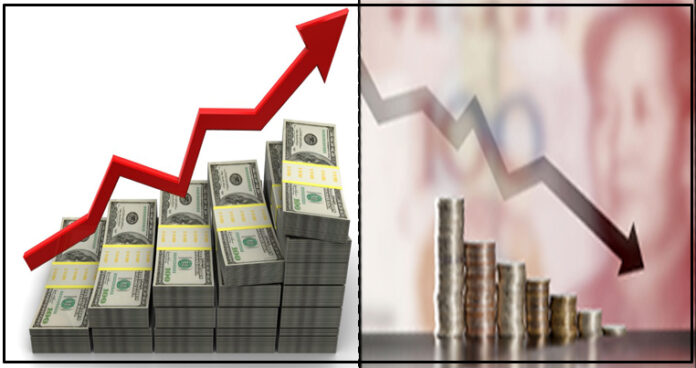The Pakistani rupee (PKR) continues its plunge against the US dollar amid the country’s prevalent economic and political instability. On Thursday, 12th March 2022, it dropped to an all-time low of 191.75 PKR during intraday trading. Maintaining a persistent decline, it crossed the critical threshold of 190 PKR one day before.
The rupee’s downward trend began in May 2021 when it sold for more than 152 PKR against USD. According to reports, during the last fiscal year (2021-22), the local currency depreciated by 32.53 PKR against USD and another 13.51 in the current year.
Many market experts, traders, investors, and economists have mentioned possible reasons for this unprecedented surge in the US dollar.
Pakistani Rupee Feels the Weight of Baggage
Besides political and economic uncertainty, heavy imports also weigh down the Pakistani rupee. The surging trade deficit, debt, and current account deficit increased pressure on the foreign exchange reserves of the State Bank of Pakistan (SBP).
According to reports, the central bank said in April 2022 that its reserves fell by 59 million USD. At the same time, foreign exchange reserves fell by 115 million USD. The trade deficit increased by 64.79% during the first 10 months of the current fiscal year (July 2021 – April 2022), bringing the total to 39.3 billion USD from 23.8 billion USD last year (July 2020 – April 2021).
Delay in International Monetary Fund (IMF) Programme
Pakistan also failed to secure a bailout package from IMF, causing panic in the market. Former finance minister Hafiz Pasha said that renewing talks with the IMF was the only way to get out of this economic crisis. He also warned that the Pakistani rupee would depreciate without the IMF’s programme even more.
The IMF’s pre-requisites for Pakistan include increasing petrol prices, electricity prices, and removing subsidies. A further loan from IMF depends on meeting its conditions. Markets are keenly eyeing the matter because Pakistan’s progress with the IMF can revive investor confidence, stabilise foreign exchange reserves, and unlock funding from other global financial institutions.
The country is currently on Extended Fund Facility (EFF), trying to convince the IMF to release its next batch of loans to boost its foreign currency reserves. According to reports, Pakistani authorities will meet IMF to discuss the 7th review in Doha next week on Wednesdays, 18th May.
Political Factors Hindering Development
Political unrest in the country has created and intensified many problems, including the depreciation of the Pakistani rupee. Ousted Prime Minister Imran Khan’s relentless campaign against the new government overshadows the need to fight economic crises. Khan incited millions of supporters to march towards Islamabad after 20th May to demand early elections.
Experts argued that it would be detrimental to the current economic condition of Pakistan. Veteran economist Dr Kaiser Bengali warned against early elections before stabilising inflation and USD rates. The expenses during the elections will increase the circulating money, adding fuel to the inflation bomb. He stressed reducing the non-development cost to fight against inflation. Political instability has always been the most prominent factor behind every currency devaluation in Pakistan.
Renowned economist and Deputy Executive Director of SDPI (Sustainable Development Policy Institute), Sajid Amin Javed, said there must be no uncertainty regarding the IMF programme. He argued that the current government must take bold steps to remove fuel subsidy, which is equal to 150 billion PKR per month. It is one of the primary reasons for a deadlock between Pakistani authorities and the IMF.


